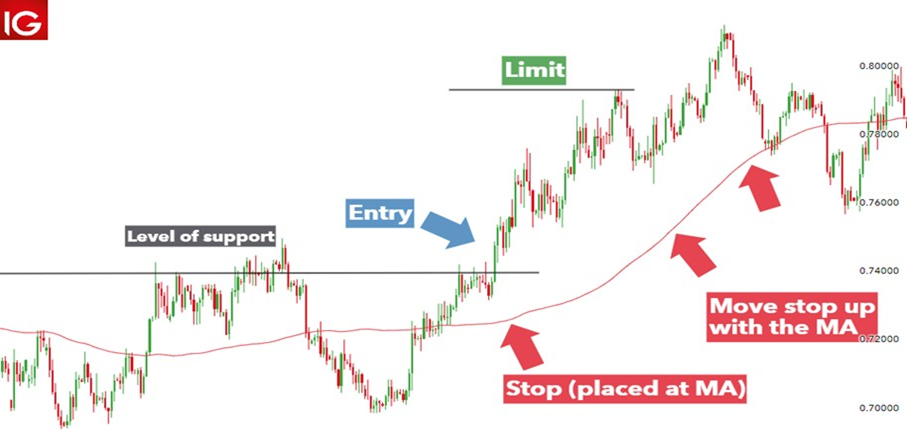Risk Management in the International Trade for Corporates using Currency Derivatives
- IBS Times

- Jul 5, 2023
- 4 min read
- By Sai Avinash Karri
“Managing risk is very different from managing strategy. Risk management focuses on the threats and failures rather than opportunities and successes.” — Robert S. Kaplan, Financial Perspective Abstract:
Risk management is a critical aspect of international trade, and businesses commonly use currency derivatives to mitigate currency-related risks. Currency derivatives, such as forward contracts, options, and swaps, provide tools for managing foreign exchange (FX) risk arising from fluctuations in exchange rates.
The use of currency derivatives in international trade allows businesses to hedge against potential losses due to adverse currency movements. For example, if a company is importing goods from another country and needs to make payments in a foreign currency, it may use a currency forward contract to lock in an exchange rate for the future, reducing the risk of unfavorable currency fluctuations. Similarly, if a company is exporting goods and expecting to receive payments in a foreign currency, it may use currency options or swaps to protect against the potential depreciation of that currency.
Risk management using currency derivatives involves careful consideration of various factors, such as the size of the transaction, the time horizon, the volatility of the currency pair, and the company's risk tolerance. Proper risk management practices typically involve settingclear risk mitigating objectives, establishing appropriate risk limits,and implementing robust risk monitoring and reporting mechanisms. By using currency derivatives effectively, businesses engaged in international trade can mitigate currency risks, enhance their financial stability, and protect their profit margins. However, it's important to note that currency derivatives also involve risks, such as market volatility, counterparty risk, and regulatory risks, which are to be carefully looked after.

Introduction:
International trade involvesthe exchange of goodsand services across borders, often involving transactions in different currencies. Currency markets play a crucial role in facilitating international trade by providing a platform for the exchange of one currency to another. The foreign exchange (FX) market is the world's largest and most liquid financial market, where currency exchanges operate five days a week, around the clock.
International trade in currency markets involves various participants, including governments, central banks, multinational corporations, financial institutions, and individual traders. These participants bought, sold, and exchanged currencies to facilitate cross-border transactions, manage risks, and speculate on currency movements.

For international trading, currency markets offer a variety of instruments, including spot transactions, forward contracts, options, and swaps. Spot transactions entail immediate conversion of one currency into another at the going rate. By locking in an exchange rate for a future date through forward contracts, parties can protect themselves against potential currency changes. Currency options provide the right, but not the obligation, to buy or sell a currency at a specified price, while currency swaps involve the exchange of one currency for another with an agreement to reverse the transaction at a later date. International trade in currency markets is influenced by various factors, including macro-economic indicators, geopolitical events, monetary policies, and market sentiments. Exchange rates, which represent the value of one currency relative to another, and constantly changes in response to these factors and can impact the cost, profitability, and risk management of international trade transactions. Managing currency risks is a crucial aspect of international trade, as fluctuations in exchange rates can impact the cost and profitability of cross-border transactions. Businesses engaged in international trade often use currency derivatives, such as forward contracts, options, and swaps, to hedge against potential currency risks and protect their bottom line.

Findings, Value Addition, and Benefits to Corporates Using Currency Derivatives to Hedge: Minimizing currency risk:
The primary objective of risk management in international trade using currency derivatives is to hedge/leverage the risk of currency fluctuations. Currency derivatives provide a way to lock in a specific exchange rate for a transaction, thereby reducing the impact of currency fluctuations on the company's financial position.
Stabilizing cash flows: International trade transactions can involve significant cash flows, and currency fluctuations can significantly impact the company's cash position. Currency derivatives can also be used to stabilize cash flows by providing certainty around exchange rates and reducing the impact of currency fluctuations.
Improving competitiveness: Currency risk can make it difficult for companies to compete in international markets. By using currency derivatives to manage risk, companies can improve their competitiveness by offering more stable prices and reducing the impact of currency fluctuations on their financial position.
Enhancing profitability: Currency risk can significantly impact a company's profitability. By using currency derivatives to manage risk, companies can enhance their profitability by reducing the impact of currency fluctuations on their financial position and improving their competitiveness in international markets.
Compliance with regulations: International trade transactions are subject to various regulations, including those related to foreign exchange risk management. By using currency derivatives to manage risk, companies can ensure compliance with these regulations and avoid potential legal and financial penalties.
CONCLUSION:
Risk management in international trade using products in currency derivatives is a crucial aspect of managing the risks associated with international transactions. Currency derivatives provide a way for companies to manage currency risk, stabilize cash flows, improve competitiveness, enhance profitability, and comply with regulations. By using currency derivatives, companies can reduce the impact of currency fluctuations on their financial position and improve their ability to compete in international markets. It is important for companies to understand the potential risks and benefits associated with using currency derivatives and to develop a risk management strategy that aligns with their overall business objectives. Overall, risk management in international trade using currency derivatives can help companies to improve their competitiveness by offering more stable prices and reducing the impact of currency fluctuations on their financial position, and to mitigate the risks associated with international transactions, and provide greater certainty around exchange rates, cash flows, and profitability.








Comments